Clancy Tucker's Blog, page 198
January 31, 2017
1 February 2017 - FACTS ABOUT EAGLES
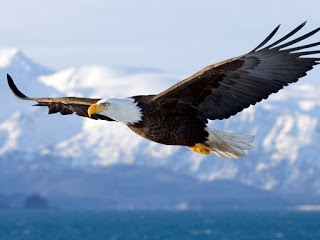
FACTS ABOUT EAGLES
G'day folks,
Here are some very interesting facts about one of my favourite birds.
 There are more than 60 different species of eagle. Eagles are different from many other birds of prey mainly by their larger size, more powerful build, and heavier head and beak. Most eagles are larger than any other raptors apart from vultures.
There are more than 60 different species of eagle. Eagles are different from many other birds of prey mainly by their larger size, more powerful build, and heavier head and beak. Most eagles are larger than any other raptors apart from vultures.
 Eagles have unusual eyes. They are very large in proportion to their heads and have extremely large pupils. Eagles’ eyes have a million light-sensitive cells per square mm of retina, five times more that a human’s 200,000. While humans see just three basic colours, eagles see five. These adaptations gives eagles extremely keen eyesight and enable them to spot even well-camouflaged potential prey from a very long distance. In fact the eagles’ vision is among the sharpest of any animal and studies suggest that some eagles can spot an animal the size of a rabbit up to two miles away!Many eagle species lay two eggs, but the older, larger chick frequently kills its younger sibling once it has hatched. Adults do not intervene.The Harpy Eagle and the Philippine Eagle have wings that spread 2.5m across and use their massive, sharp talons, to kill and carry off prey as large as deer and monkeys. In Greece, Golden Eagles eat turtles, dropping them from great heights onto rocks to break open their armoured shells.Although most eagles are carnivorous the African Vulturine Fish-Eagle is primarily vegetarian, feeding on rich oil palm fruits.Some eagles are built with short wings and long tails enabling them to hunt in the tight confines of a forest, while others have short tails and broad long wings allowing them to soar high above open plains and water.Golden eagles in Wyoming have been observed foraging across an area of 100 square miles.To defend their territories and attract a mate, bald eagles put on spectacular aerial displays including death-defying swoops and seemingly suicidal dogfights that involve locking talons with another bird and free-falling in a spiral.Eagles are admired the world over as living symbols of power, freedom, and transcendence.The spot where an eagle landed dictated to the ancient Aztecs the place where they were to build a city.In some religions, high-soaring eagles are believed to touch the face of God.Native Americans historically gave eagle feathers to non-indigenous people and also members of other tribes who were deemed worthy.Although many eagle populations are dwindling as a result of habitat destruction, hunting, and pollution, conservation efforts are helping some species such as the Bald Eagle which has made a dramatic comeback in the U.S. over the last few decades.
Eagles have unusual eyes. They are very large in proportion to their heads and have extremely large pupils. Eagles’ eyes have a million light-sensitive cells per square mm of retina, five times more that a human’s 200,000. While humans see just three basic colours, eagles see five. These adaptations gives eagles extremely keen eyesight and enable them to spot even well-camouflaged potential prey from a very long distance. In fact the eagles’ vision is among the sharpest of any animal and studies suggest that some eagles can spot an animal the size of a rabbit up to two miles away!Many eagle species lay two eggs, but the older, larger chick frequently kills its younger sibling once it has hatched. Adults do not intervene.The Harpy Eagle and the Philippine Eagle have wings that spread 2.5m across and use their massive, sharp talons, to kill and carry off prey as large as deer and monkeys. In Greece, Golden Eagles eat turtles, dropping them from great heights onto rocks to break open their armoured shells.Although most eagles are carnivorous the African Vulturine Fish-Eagle is primarily vegetarian, feeding on rich oil palm fruits.Some eagles are built with short wings and long tails enabling them to hunt in the tight confines of a forest, while others have short tails and broad long wings allowing them to soar high above open plains and water.Golden eagles in Wyoming have been observed foraging across an area of 100 square miles.To defend their territories and attract a mate, bald eagles put on spectacular aerial displays including death-defying swoops and seemingly suicidal dogfights that involve locking talons with another bird and free-falling in a spiral.Eagles are admired the world over as living symbols of power, freedom, and transcendence.The spot where an eagle landed dictated to the ancient Aztecs the place where they were to build a city.In some religions, high-soaring eagles are believed to touch the face of God.Native Americans historically gave eagle feathers to non-indigenous people and also members of other tribes who were deemed worthy.Although many eagle populations are dwindling as a result of habitat destruction, hunting, and pollution, conservation efforts are helping some species such as the Bald Eagle which has made a dramatic comeback in the U.S. over the last few decades.

Clancy's comment: A spectacular bird in the sky. I could, and have, watched them for hours.
I'm ...


Published on January 31, 2017 12:14
January 30, 2017
31 January 2017 - ROLLING PICTURES
[image error]
ROLLING PICTURES
G'day folks,
Time for some more spectacular moving pictures. Some of these are very clever. Check out the cat helping to park the car.
[image error]
[image error]

[image error]

[image error]



[image error]
[image error]
[image error]
[image error]
[image error]

[image error]



Clancy's comment: Wow, the cats are fantastic, eh?
I'm ...


ROLLING PICTURES
G'day folks,
Time for some more spectacular moving pictures. Some of these are very clever. Check out the cat helping to park the car.
[image error]
[image error]

[image error]

[image error]



[image error]
[image error]
[image error]
[image error]
[image error]

[image error]



Clancy's comment: Wow, the cats are fantastic, eh?
I'm ...


Published on January 30, 2017 12:52
January 29, 2017
30 January 2017 - DAISY MAY BATES
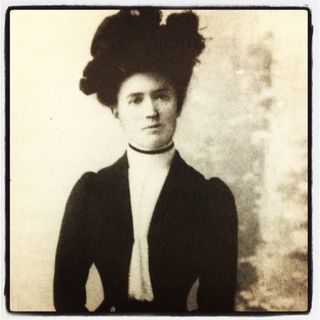
DAISY MAY BATES
G'day folks,
Welcome to some interesting facts about another interesting woman. Daisy May Bates, CBE was an Irish Australian journalist, welfare worker and lifelong student of Australian Aboriginal culture and society. She was known among the native people as 'Kabbarli'.
Daisy May Bates (1863-1951), welfare worker among Aboriginals and anthropologist, was born on 16 October 1863 in Tipperary, Ireland, daughter of James Edward O'Dwyer, gentleman, and his wife Marguarette, née Hunt. Her mother died in Daisy's infancy and she had an unstable childhood. On the death of her maternal grandmother she was put, aged about 8, in the care of Sir Francis Outram's family in London.
Suspected of having contracted pulmonary tuberculosis, she migrated to Australia in 1884 and lived briefly at Townsville, Queensland, as a guest of Bishop G. H. Stanton. On 13 March 1884, at Charters Towers, Daisy May O'Dwyer married Edwin Henry Murrant. It is almost certain that this was Harry Harbord Morant.Shortly afterwards, he and Daisy separated. Late that year she was employed as a governess at Berry, New South Wales.
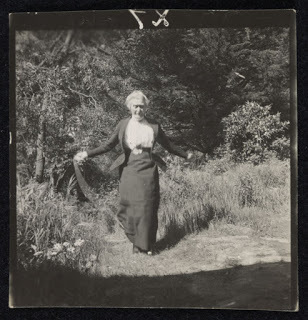
On 17 February 1885 at Nowra she married Jack Bates, a cattleman. When he resumed droving she travelled to Sydney where, on 10 June 1885, she married Ernest Baglehole. Within months she was back with Bates; they had a son Arnold in 1886. She showed only a distant attachment to husband and son, leaving both in Australia when she returned to England in 1894 for what turned out to be a stay of five years. In London she worked on the Review of Reviews, learning the craft of journalism which was to become a crucial source of income when she lived with the Aboriginals.
Daisy Bates returned to Australia in 1899. Interested in an allegation in The Times about atrocities against Aboriginals in north-west Australia, she went to the Trappist mission at Beagle Bay, north of Broome. Here she had her first long contact with Aboriginals while working at this decaying settlement and its market gardens.
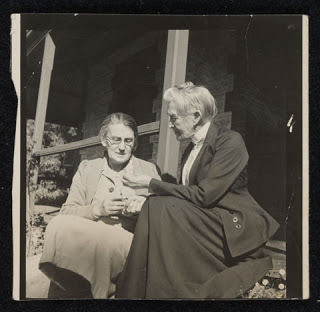
The north-west also saw the start of her inquiries among the local Aboriginals when in 1901 she temporarily rejoined her husband on the cattle-station at Roebuck Plains, where tribes from the Broome district were camped. Her curiosity about the camp's disputes and scandals led her to investigate their roots in kinship. She started to collect vocabularies and saw sacred and secret ritual life. These eccentric interests further estranged her from her husband, and she finally left him after a harrowing ride over-landing cattle from Broome to Perth in 1902.
Daisy Bates had already shown such anthropological promise that in 1904 she was appointed by the Western Australian government to research the tribes of the State. Next year this task was temporarily narrowed to a study of the Bibbulmun tribe of the Maamba reserve in the south-west, where she conducted her first concentrated period of field-work. She recorded wide-ranging data on language, myth, religion and kinship.
In an important 1905 paper on marriage laws she showed the equivalences of the four-section system for northern tribes and those to the south. By 1910 she had completed a substantial manuscript on the Aboriginals. Its publication was fatally delayed by the arrival from Britain of an expedition, led by A. R. Radcliffe-Brown, to study the social anthropology of Aboriginals of the north-west. Because of her experience Daisy Bates was appointed a member of this expedition but she turned herself to welfare, moved by the miseries of the sick and elderly Aboriginals enforcedly exiled on the islands of Bernier (the males) and Dorré (the females). Her anthropological knowledge showed her that to physical distress were added the mental agonies of unnatural juxtapositions of tribe and kin. She claimed that it was there that the Aboriginals gave to her the affectionate name 'Kabbarli', meaning grandmotherly person.
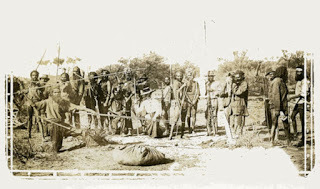
In 1912 she established the first of the harsh, isolated camps for which she became renowned. She camped at Eucla amongst the remnants of the Mirning tribe on the southern fringe of the Nullarbor Plain. She was invited to attend meetings in eastern capitals in 1914 of the anthropological section of the British Association for the Advancement of Science. To attend, she arranged a crossing of 250 miles (402 km) over the southern Nullarbor Plain in a small cart pulled by camels.
She returned in 1915 to the Mirning's area, but this time to the eastern margin near Yalata. In 1918, during a brief stay in Adelaide, she failed to extract from the South Australian government a protectorship and money for medical work. Nevertheless, she set off for a stay of sixteen years at Ooldea, a permanent water-hole on the trans-Australian railway around which Aboriginals had gathered. Here the travelling public could see her remarkable welfare work. In 1920 she was appointed a justice of the peace. Three visits by royalty brought her fame and she was appointed C.B.E. in 1934.
At Ooldea in 1932 Daisy Bates had been befriended by the writer Ernestine Hill, who aided her return to Adelaide in 1935 and the writing of her autobiography, 'My Natives and I', serialized in several newspapers. Those episodes dealing with the latter part of her life were edited into The Passing of the Aborigines (London, 1938). To prepare her papers for the national collection the Australian government had, in 1936, given her a stipend. The sum was insufficient for normal living so she chose to do the work in a tent at Pyap on the River Murray. This episode successfully ended in 1940 with the transfer of ninety-nine boxes of papers to the Commonwealth National Library.
Still with some government stipend, she was living in 1941 in the railway siding of Wynbring, east of Ooldea. Her letters show that old age and failing health were at last making such an austere life untenable. By 1945 she was back in Adelaide, where a secretary who worked with her briefly found her 'an imperialist, an awful snob … a grand old lady'. She died in an old people's home at Prospect on 18 April 1951, leaving an estate valued for probate at £66.
Though applauded for the self-sacrifice of her welfare work, Daisy Bates had no illusion about her own motives, which she privately identified with those that had previously impelled her to enjoy such sports as hockey, tennis and fox-hunting.
She wrote some 270 newspaper articles about Aboriginal life, valuably sensitive accounts of cultures customarily presented in the press as unintelligibly bizarre. However, her repeated, emphatic assertions concerning Aboriginal cannibalism aroused much controversy. She strongly opposed miscegenation; her belief that Aboriginal full-bloods would become extinct unless segregated from Europeans was proved wrong by the population statistics of the years following the Passing. Nevertheless her widely read defeatist views helped prod governments into action in medicine and child care.

Radcliffe-Brown had likened her mind to a well-stocked but very untidy sewing-basket. Her anthropology found little favour with anthropologists and her papers lay dormant for three decades, though latterly they have received some scholarly attention. The usefulness of the collection as a resource of anthropological information lies in the strong empirical thread in her research, coupled with a precocious manifestation of the anthropological method of living with one's subject. She had been careful 'never to intrude my own intelligence upon' the Aboriginals. Her place in Australian folklore has been formalized by the opera, The Young Kabbarli, written by Lady Casey to music by Margaret Sutherland. Her achievements remain the subject of sustained controversy.

Clancy's comment: Mm ... Interesting, eh?
I'm ...


Published on January 29, 2017 12:30
January 28, 2017
29 January 2017 - THE MIGHTY MEKONG

THE MIGHTY MEKONG
G'day folks,
Welcome to some superb snapshots of, and life on and near, the Mekong River - my favourite river, taken by a top photographer.




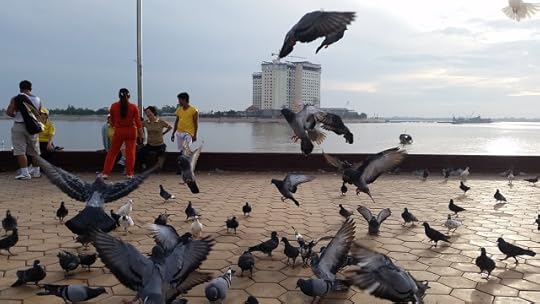
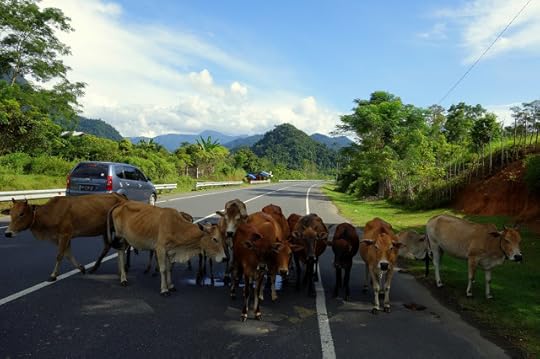







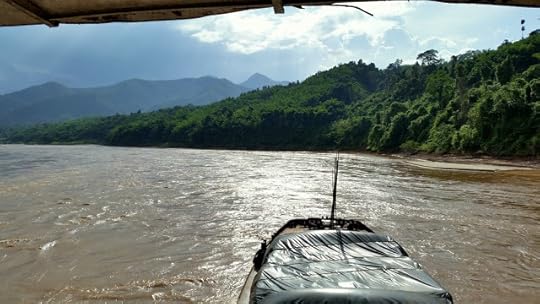




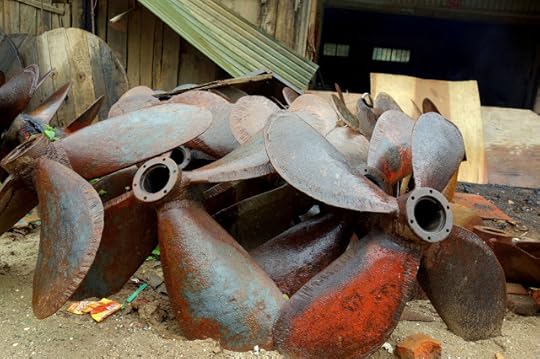

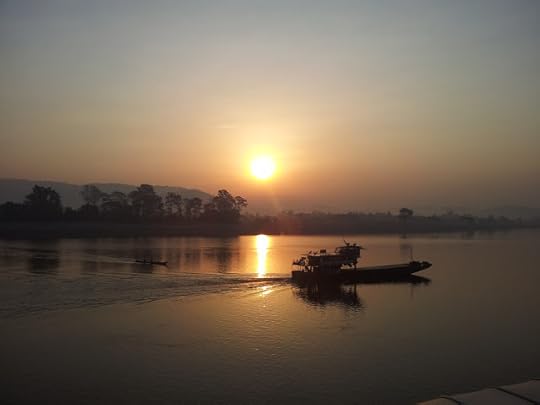

Clancy's comment: Ah, gives me goosebumps.
I'm ...
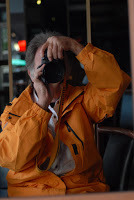

Published on January 28, 2017 13:19
January 27, 2017
28 January 2017 - THE BASKING SHARK

THE BASKING SHARK
G'day folks,
Welcome to a creature you have probably never heard of. The basking shark is the second largest living fish, after the whale shark, and one of three plankton-eating sharks along with the whale shark and megamouth shark. Adults typically reach 6–8 m in length.
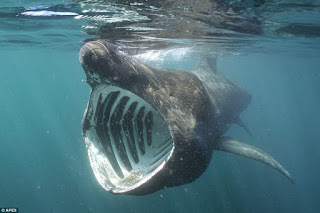
Basking sharks can be found in temperate waters around the globe and are the world’s second largest living fish reaching an impressive 8 metres (that’s almost the length of two cars).

Amazing Facts About the Basking SharkBasking sharks live in temperate (mild temperatures) waters around the world.Basking sharks are filter feeders. This means that they strain suspended matter (solid particles that float in water) and food from water (much like a strainer or sieve used in the kitchen). This is done by enlarging the mouth and passing water over gill rakers.Gill rakers are growths made from cartilage that help the shark feed and prevent loose particles from passing through the gills, helping the shark to breathe.Their diet consists mainly of zooplankton (tiny animals that live near the surface of water), fish eggs, barnacles and shrimp.Basking sharks are peaceful animals. They do not hunt other marine animals or harm humans.Due to their passive temperament, basking sharks have the smallest weight to brain weight ratio of any shark.These sharks were once over exploited for their fins, liver oil and as a source of food for humans as well as feed for livestock. This has led to a decrease in population size and they are now listed as vulnerable.Basking sharks can be found alone, but sometimes are found in small groups or schools of many individuals.Their name comes from the fact that they look like they are basking on the water surface whilst feeding.They have also been the subject of many myths and legends. In the past, fishermen and locals had reported sightings of seeing a sea serpent monster or a globster (an unidentified organic mass), most famously the Stronsay Beast. In actual fact, when a basking shark dies its body decomposes in a way that could resemble a sea monster! This is also known as cryptozoology.


Clancy's comment: Had you heard of them? Wow, that is one hellova big mouth.
I'm ...


Published on January 27, 2017 14:45
January 26, 2017
27 January 2017 - BONO

BONOG'day folks,
I have featured this guy before, but he is a very interesting character.
Paul Hewson is one of the most famous people in the world. Of course, you know him better as Bono, lead singer of the Irish stadium behemoth, U2. Behind the trademark bug-eyed sunglasses and golden falsetto is one of the most visible and accomplished figures in music history. His constant humanitarian efforts, his working relationship with presidents and prime ministers, and the world-conquering success of his band’s albums and tours make Bono a figure of towering cultural importance beyond his music. But of course, U2’s music also casts a shadow as long as its 35-year history.

Paul was born to a religious family in Dublin, Ireland. His spiritual upbringing would figure prominently into his life and music. But his real evolution as a musician came when he began attending the Mount Temple Comprehensive School, where he met his future bandmates and earned the nickname Bonovox (translated from the Latin for “good voice”). Bono and his mates found that they weren’t particularly good at covering the Stones or Beach Boys, so they began writing their own compositions. Taking their name in 1976, U2 managed a contract with Island Records and released Boyin 1980.
Their debut earned critical praise for Bono’s impassioned delivery and the band’s militant post-punk frankness. Minor Billboard success only hinted at the band’s achievements over the coming decade.
From the political pointedness of 1983’s Warto the the proto alt-country majesty of 1987’s The Joshua Tree to the electrofunk undercurrent of 1991’s Achtung Baby, U2 was arguably the most important rock band of the decade. Their stadium-filing tours, airwave-dominating singles, and album-oriented precision made the band, and particularly their frontman, a global phenomenon. Ultimately, the elements of punk, new wave, and arena rock that U2 fused together became a sound all their own, and one to which future stadium acts like Radiohead, Coldplay, and Muse owe an incalculable debt.

Over the course of the ‘90s, U2 redefined the enormity and spectacle of the live rock show. Playing to ever-larger audiences, the band dedicated its considerable resources to creating an enveloping sonic and visual experience even for audiences numbering in the tens of thousands. As a singer, Bono elevated the bar first set by Mick Jagger, using his tremendous passion and charisma to create intimacy in even the most expansive venues.
As the frontman of U2, Bono is the chief lyricist and, without question, the reason its albums have shipped to the tune of 150 million worldwide. They are also the recipients of a stunning 22 Grammy Awards and an induction into the Rock and Roll Hall of Fame. Bono may also be rock’s greatest humanitarian. His efforts at promoting debt relief for developing nations and his work to spotlight poverty in Africa have granted him a key to the White House and perhaps even a genuine impact on global policy. Time magazine named him 2005’s Person of the Year.

Clancy's comment: Very interesting character indeed. He and Bob Geldof have probably achieved more than countless politicians. Nothing surprising, eh? By the way, Geldof is mentioned in my latest book, 'Bold Journey'.

I'm ...


Published on January 26, 2017 13:43
January 25, 2017
26 January 2017 - AUSTRALIA DAY 2017
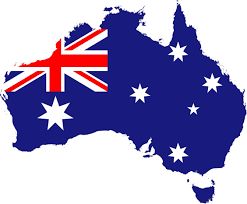
AUSTRALIA DAY 2017
G'day folks,
Happy Australia Day. Australia Day is on January 26 and commemorates the establishment of the first European settlement at Port Jackson, now part of Sydney, in 1788.
What Do People Do?
Many people have a day off work and use the day among other things to barbecue, go to outdoor concerts, and to play or watch sports events.
Different places in Australia celebrate the day differently. For example, Sydney has boat races including a ferry race and the tall ships race, while Adelaide celebrates with a parade, concert, fireworks, and a cricket match.Australian citizenship ceremonies are often held on Australia Day. These are ceremonies to welcome immigrants who have been granted citizenship to the country. Although official, these ceremonies often have a festive atmosphere.

Public Life
Australia Day is a public holiday in all states and territories. All schools and post offices are closed. Some public transport services do not operate, and others run a reduced service. Stores are often open, but may have reduced opening hours. There may be some congestion on roads, particularly close to major events.
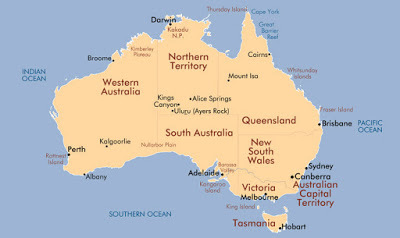
BackgroundJanuary 26 marks the landing of Captain Arthur Phillip at Port Jackson in 1788. The landing is known as the First Fleet and had 11 ships with convicts. The arrival of the First Fleet represents the founding of the colony New South Wales.
In 1818, on the 30th anniversary of the founding of the colony, the Governor of New South Wales gave all government employees a holiday. He also celebrated the day with a 30-gun salute and a ball. In the following years, employees of banks and other organizations were also given holidays.
Initially, it was only New South Wales that celebrated the day, and it was known as First Landing Day or Foundation Day. In 1838, 50 years after the First Fleet arrived, Foundation Day was declared Australia's first public holiday in New South Wales.
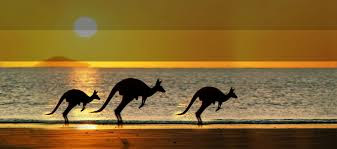
By 1935, January 26 was known as Australia Day in all states except New South Wales, where it was still called Anniversary Day. From 1946, January 26 was called Australia Day in all states and territories, and since 1994, the Australia Day public holiday has been on January 26 throughout the country.
Because it marks the day of colonization, Aboriginal Australians often feel that the celebrations on Australia Day exclude them. The day has been renamed Invasion Day, and protests do appear side-by-side the celebrations.
In recent years, efforts have been made to make the holiday include all Australians, and in 2013, the Australian flag and Aboriginal flag were raised on the Sydney Harbour Bridge for the first time on Australia Day.
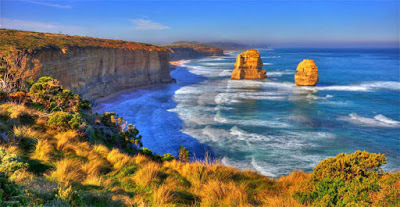
SymbolsThe symbols of Australia are commonly used on Australia Day: The Australian national flag, with its representations of the Union Jack, the Commonwealth Star, and the five stars of the Southern Cross. The national anthem, Advance Australia Fair, is played, but also Australia’s unofficial anthem, Waltzing Matilda, is a common song to be heard.
Other symbols include the Golden Wattle, which is the national floral emblem, the opal, which is the national gemstone, and the national colours of green and gold.
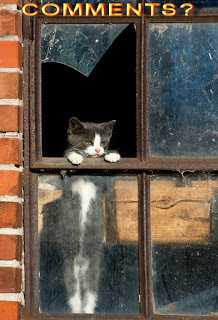
Clancy's comment: Sadly, many Australians have no respect for this day. To them, it's just another public holiday.
I'm ...
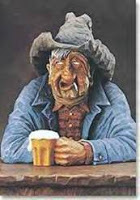

Published on January 25, 2017 14:57
January 24, 2017
25 January 2017 - LEFT WING OR RIGHT WING?

LEFT WING OR RIGHT WING?
G'day folks,
Ever wondered what they mean by this expression?
Today the terms “left wing” and “right wing” are used as symbolic labels for liberals and conservatives, but they were originally coined in reference to the physical seating arrangements of politicians during the French Revolution. The split dates to the summer of 1789, when members of the French National Assembly met to begin drafting a constitution. The delegates were deeply divided over the issue of how much authority King Louis XVI should have, and as the debate raged, the two main factions each staked out territory in the assembly hall.

The anti-royalist revolutionaries seated themselves to the presiding officer’s left, while the more conservative, aristocratic supporters of the monarchy gathered to the right. “I tried to sit in different parts of the hall and not to adopt any marked spot, so as to remain more the master of my opinion,” one right-wing baron wrote, “but I was compelled absolutely to abandon the left or else be condemned always to vote alone and thus be subjected to jeers from the galleries.”
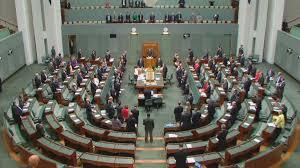
The divisions only continued during the 1790s, when newspapers began making reference to the progressive “left” and traditionalist “right” of the French assembly. The distinctions later vanished for several years during the reign of Napoleon Bonaparte, but with the Bourbon Restoration and the beginning of a constitutional monarchy in 1814, liberal and conservative representatives once again took up their respective posts on the left and right of the legislative chamber. By the mid-19th century, “left” and “right” had entered the French vernacular as shorthand for opposing political ideologies. Political parties even began self-identifying as “center left,” “center right,” “extreme left” and “extreme right.”

France’s “left” and “right” labels filtered out to the rest of the world during the 1800s, but they weren’t common in English-speaking countries until the early 20th century. The terms are now used to describe the opposing ends of the political spectrum, but their origins are still evident in the seating arrangements of many legislative bodies. In the U.S. Congress, for example, Democrats and Republicans traditionally sit on opposite sides of the House and Senate chambers.

Clancy's comment: Mm ... How the world has shifted, eh? Many have called me a 'lefty', and I've always accepted that as a compliment. Why not? It's better to be a person who challenges issues and is a thinker, rather than be a lazy conformist who sits back and just let's it happen.
I'm ...

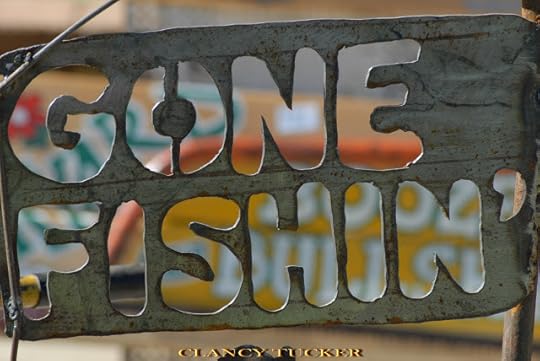
Published on January 24, 2017 13:34
January 23, 2017
24 January 2017 - 'BOLD JOURNEY' - NEW RELEASE - CLANCY TUCKER
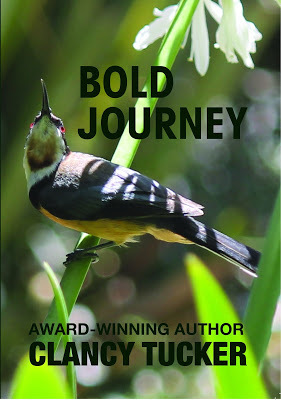
'BOLD JOURNEY'- NEW RELEASE -
[image error]

G'day folks,
Time to release my next book - BOLD JOURNEY. So, what's it about you may ask. It's a story based on my experience and knowledge of migrants who made the ultimate sacrifice. Yep, those who left their country to start a new life in Australia. Many have done exactly that, and so many have been successful in many different ways - business, politics, sport, medicine, farming etc.

ORIGINS OF THIS STORY
For many years I worked with migrants, and I was always impressed by their work ethic and love of family life. Working with them also inspired me to travel the world, to see exactly where they came from. Well, I certainly did that - many times over, and I'm still travelling. This story is about an Italian family, but it could well have been about a Greek family, or countless other nationalities that have made Australia their home.

HERE IS THE BLURB:
When Severino Agnelli and his family migrate to Australia from Italy in 1954, his son, ‘Fozzie’, meets a beautiful girl, ‘Cat’ Ginelli, on the ship, and they become friends. The Agnelli and Ginelli families love Australia, work hard and forge friendships. Cat becomes a nurse and Fozzie a journalist, but tragedy strikes when Fozzie’s brother is killed in the Vietnam War, and Fozzie spirals into depression when his dad dies. Cat pleads with him to write the book he’s wanted to write – ‘Bold Journey’.
Fozzie flies to London, writes his book, and travels to Italy where he sees Cat interviewed on television, working as a nurse during a famine in Ethiopia. Inspired by Cat, Fozzie heads to Ethiopia to report on the famine, and his passionate reports are syndicated worldwide. Cat is unavailable, but Fozzie leaves a crucifix with her colleague; one Cat made for him in 1954. Returning to London to fight for the Ethiopians, he is hospitalised with meningitis, and Cat flies from Italy to keep a secret vigil by his bedside. Fozzie recovers, and Cat leaves London to get on with her life.
Attending an International Awards ceremony, Fozzie is stunned to win an award for Humanitarian Journalism. Minutes later, Cat is awarded an honour for Exceptional Courage. Will Cat accept her award? Will she and Fozzie finally meet up? Who nominated them for their awards?

ISSUES INCLUDED IN THIS BOOK:
Families, migration, Italy, Australia, Ethiopia, the Vietnam War, bullying, settlement, shipboard life, death, friendships, mateship, loyalty ... And a touch of romance along the way.
A FEW EXCERPTS FROM THE BOOK:
"My parents stood proudly on the dais as Mr Thompson took control of a situation that I thought had been destroyed by three bullies. One last gift remained. I could see it, and wondered what it was. When the teacher called Cat to the front, I anxiously handed my final gift to her and waited nervously as she unwrapped it. With a broad smile, she slowly unravelled the package to reveal the same papier mache’ kitten I’d spent hours creating. It looked as good as the day I’d wrapped it, and I gawked at Mr Thompson. He winked at me and pointed to Cat. Overwhelmed with her gift, she spontaneously kissed me on the cheek. Then, when she took me by the hand and stood proudly beside me, the dining room cheered. The clapping and cheering finally abated and our wonderful teacher stepped up to the microphone with one final wish for everybody."

"It was six in the morning, and Rex Monaghan had taken his first telephone call for the day. The senior manager of Tip Top Bakeries had received a call from one of his best workers. With a broad smile on his face, he walked into the large, unusually sombre canteen, grabbed the microphone and made an announcement.
‘Good morning. Today is a great day at Tip Top. Fausto is alive and well. Thank you.’ The employees screamed with joy at his announcement. Rex Monaghan switched the microphone off, waved to his workers and returned to his office to ring his wife with the good news. Although weary from searching all night, he was happy to know that Fausto had been found safe and well. He was also proud that more than fifty of his employees had spent the night searching for Sev’s kid."

"Sergio’s death encouraged me to take more interest in the war in Vietnam, needing to find a logical reason for my brother’s death. I read the newspaper every day, talked to my teachers about the conflict, and spent many hours in our school library, learning all I could about a country called Vietnam. However, the more I read and learnt about the war, the less I found a justifiable reason for my brother being there in the first place, let alone dying there.
That made me angry, and I attended five anti-war marches in Melbourne; known as Moratoriums. My parents had no idea that I had attended the marches. I wagged school, caught a train to Melbourne, and changed my clothes in a toilet at Flinders Street Station. After each march, I changed back into my school uniform and arrived home at the normal time so no one was suspicious.
However, after the second Moratorium, I was called into the principal’s office to explain my absence from school. Ordinarily, you needed a note from your parents for any day of non-attendance. Rather than make up a story and lie, I decided to be brutally honest with the principal, Brother Callan. It worked. Brother Callan was dead against the war, and totally understood why I had attended the biggest anti-war marches in the world, and I clearly recall what he said and did when our meeting had concluded.
The tall Christian Brother shook my hand and hugged me. ‘Take care, Fausto. I’m with you in spirit … And I’m so sorry about Sergio’s death. Just keep me informed,’ he said, and winked at me. I could tell by his eyes that he was passionate about the futility of the Vietnam War; any war."

"Every moment I had, I prayed for Fozzie’s recovery, hoping his wonderful journalism for Ethiopia would be repaid by a forgiving God. Hour after hour I spent by his bed, often falling asleep, but waking at some weird hour to return to the nurse’s home to catch up on sleep. Regular calls to Uncle Angelo in Santorini had provided hope and inspiration. Angelo had always been bright, cheerful and positive, and I recalled my first telephone conversation with him after I’d left Santorini for London. It was a powerful call; Angelo expressing his gratitude for the gold cross and chain I’d left on his pillow. In a short space of time, I came to admire the man and realise why Fozzie had so much respect for him. I also learnt why he loved Fozzie.
When Fozzie finally regained consciousness, I wanted to walk in and hug him, grateful that he’d survived a dreaded disease. Instead, I resigned my position and became a tourist, visiting all the major tourist spots in London. I needed to get on with my life. So did Fozzie."

Clancy's comment: My last book was about abduction. This book is very different, and many folks will relate to this story. However, it really is a disguised romance. So, if you are keen to be involved with an Italian family who made the ultimate sacrifice, head up to the right-hand side of this page and grab a copy. Bold Journey, like all of my books, comes as a paperback with a matching bookmark, and also as an e-Book.
Grazie tanto ... Auguri
Sono ...
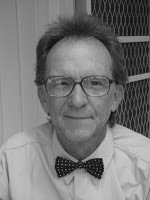

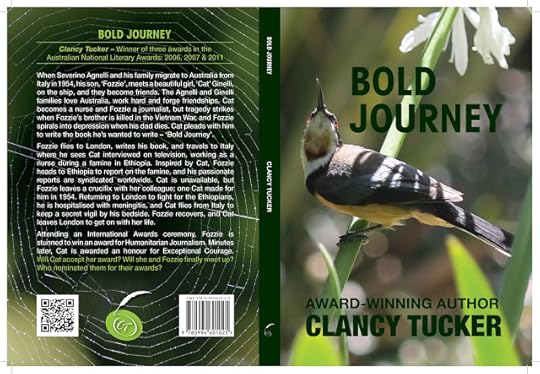
Published on January 23, 2017 14:06
January 22, 2017
23 January 2017 - DAVID BYRNE

DAVID BYRNE
G'day folks,
Welcome to some facts about a successful composer.
David Byrne is the thinking man’s rocker. The idiosyncratic singer, songwriter, and ambient composer may well be the single greatest influence coursing through today’s rock radio consciousness. While groups like R.E.M., the Pixies, and the Cure all deserve mention in this category, The Talking Heads best represent the nervy arthouse ethos of new wave, the lyrical obscurity of alternative, and the addictive hookiness of today’s beardly hipster bands. All owe a debt to David Byrne for their right to be weird and successful all at once.
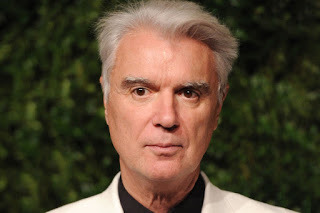
Born in Dumbarton, Scotland, Byrne’s family relocated several times during his youth before ultimately settling in Baltimore when he was nine. By this time, Byrne was already adept at the guitar, accordion, harmonica, and violin.
Studying music first at the Rhode Island School of Design and thereafter the Maryland Institute College of Art, Byrne ultimately dropped out of school to pursue music in New York. His arrival there could not have come at a better time. His off-kilter vocals, quirky songwriting, and staccato time signatures were perfectly at home in the burgeoning punk scene.

Forming the Talking Heads in 1975, Byrne rose to recognition as part of the wild CBGB scene that give birth to punk legends like the Ramones, Television, and Blondie. Among them, the Talking Heads stood out for their intelligence and conscious artiness. In 1977, their breakthrough hit, “Psycho Killer,” burned up the charts while the Son of Sam terrorized New York.
Over the course of eight albums, David Byrne was responsible for the lion’s share of writing, as well as for his band’s musical eclecticism. Albums like Fear of Music (1979) and Speaking in Tongues (1985) produced substantial charting hits while incorporating elements of Brazilian music, African polyrhythms, and the synthesizers that would define new wave. As to the latter, the Talking Heads were the most essential trailblazer in a genre that shot the Police, Duran Duran, and the Cars to megastardom. Byrne’s contributions to the MTV era may best be captured in the band’s groundbreaking Stop Making Sense (1984), an ingenious concert documentary (not to mention album) directed by Jonathan Demme. Its imagery and performance aesthetics make it a template-setting document in the music video medium.

Though the Talking Heads disbanded at the end of the ‘80s, Byrne’s solo career continues to distinguish him. Starting with 1981’s highly influential ambient record, My Life in the Bush of Ghosts(1981), Byrne has lent his name to a series of solo works that touch on all manner of world, electronic, and even dance music. David Byrne was inducted into the Rock and Roll Hall of Fame with the Talking Heads in 2002 and is the owner of a Grammy, Oscar, and Golden Globe.

Clancy's comment: Mm ... Another very successful life.
I'm ...

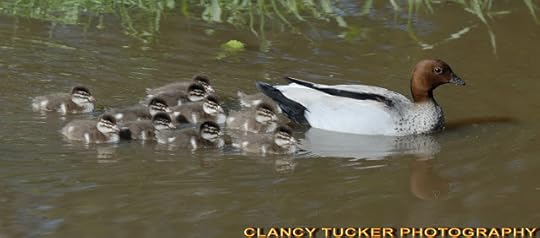
Published on January 22, 2017 12:17



